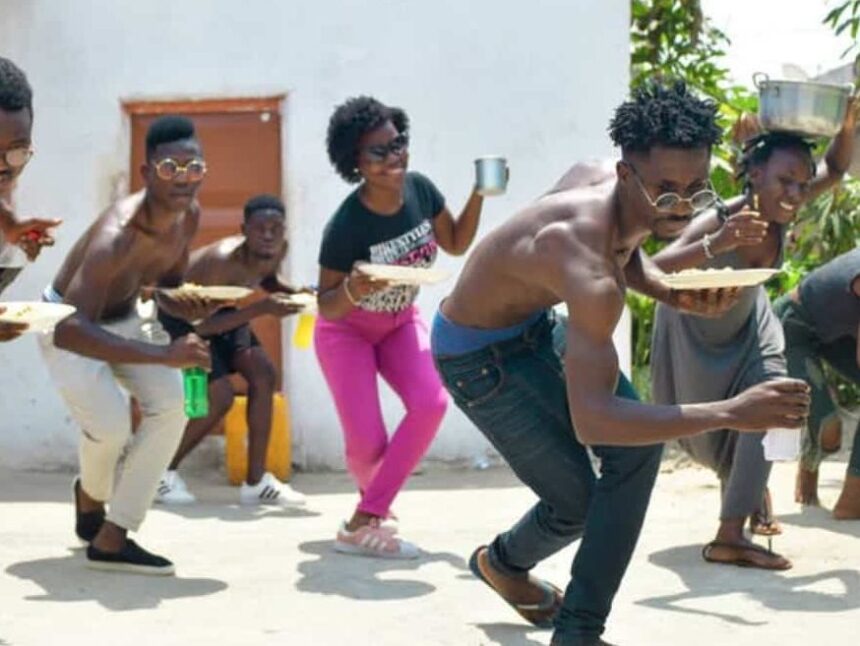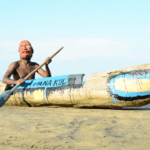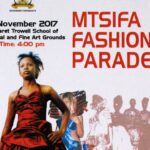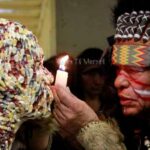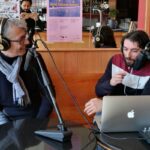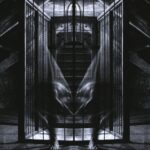Angolan Kuduro: Dance Conquers the City
Inês Cordeiro Dias
In Angola, the urban dance music kuduro has taken over the streets of the capital city of Luanda. The musical genre emerged during the 1990s, when the country was going through a brutal civil war, and the younger generations found in it a way to express war traumas and their daily life struggles. Kuduro became a popular form of artistic expression for Angolans, especially those living in the slums, to claim their space in the city, and to criticize society. Kuduro became so popular that the MPLA (Movimento Popular de Libertação de Angola or the People’s Movement for the Liberation of Angola), the ruling party since independence in 1975, adopted the genre for the party’s political campaigns.
In this essay I want to demonstrate the political power of kuduro, and the ways in which Angolans use it to inscribe themselves in urban space and to claim visibility despite their marginalization from the powerful sectors of society. I want to explore how kuduro artists use the musical genre to express their political views, their daily struggles, and their criticism of Angolan society. Kuduro was born in the slums of Luanda, known as musseques, where three-quarters of the metropolitan population live. [1] Until 2017 Luanda was the most expensive city in the world, while the average citizen lived on only $2 a day. [2] Angola went through a civil war between 1975, when it gained independence from Portugal, and 2002. Many Angolans looked for refuge from the war in the capital city, which led to a rapid growth of the urban population, who settled mainly in the musseques. At the same time, freedom of expression was not guaranteed, and the government of José Eduardo dos Santos (in power from 1979 to 2017) persecuted journalists like Rafael Marques and political activists like Luaty Beirão for speaking against the government. Kuduro became the youth’s favorite mode of expression, and it became a vehicle for performing discontent with the state of things without necessarily referencing any politicians or political parties.
Musician Tony Amado claims for himself the invention of kuduro. He notes that the dance came before the music, putting dance in the forefront of this musical genre. In an interview Amado gave to Angolan national television (the TPA or Televisão Popular de Angola), when asked about the beginning of his singing career, he stated that he actually began dancing long before he became a singer. [3] Then, somehow contradicting himself, he noted that he began playing the piano and singing at the Maná Church. He later left the church and began choreographing other important Kizomba musicians, like Eduardo Paim, Ruca Van-Dunem, and Nelo Bastos [4]. In every interview with Tony Amado, as well as in most texts about kuduro, the fact that the dance came before the music is something constantly emphasized. In fact, it is not uncommon that the lyrics are hard to understand because of the loud beats and fast singing. Amado recounts that he came up with kuduro while watching a scene from the film Kickboxer (1989), when Jean Claude van Damme, a little drunk, dances at a bar in Thailand with movements that are stiff and somewhat clumsy [5]. In this scene, Van Damme suddenly replaces his dance moves with fight movements when a group of fighters attacks him. As Hershini Young points out,
Creating music to accompany the drunken movements of Van Damme’s character’s dance, Amado put together a driving electronic beat and some pared down lyrics over the track. While no cultural form has a single origin, and an insistence on the veracity of Amado’s story would be to underestimate how important fictional narratives are to cultural production [. . .]. In this story of the birth of kuduro, dance is automatically associated with fighting. [6]
As Alisch and Siegert point out, Angolans rarely, if ever, represent themselves as victims, and they describe Angolan collective memory as one of heroes. [7] According to Tony Amado, the inspiration for kuduro is a typical Hollywood hero, who can beat many enemies with his extraordinary strength and fighting skills, just like Van Damme does in the dance scene from Kickboxer. A number of authors, including Hershini Young, Stefanie Alisch and Nadien Siegert, have pointed out that dance moves embody war traumas: “graphic theatrical movements such as crawling in the ground as if in a battle, dancing on the thighs as if the legs were amputated, dancing with legs turned in as if on crutches, dancing on crutches with missing limbs, slapping themselves in the face and falling flat on the ground as if shot, or mimicking media images of ‘starved Africans.’” [8] However, while dancers embody these images they refuse the status of victims while doing so. Their dance is powerful and engaging, and those watching the performances can only admire the prowess of their moves.
In an interview, when asked if he saw kuduro as a genre dealing with war trauma, singer Diamondog replied ‘No, no, no, kuduro is a music of joy. To initiate some kind of meditation process . . . No that’s impossible with kuduro.’” [9] Dancing kuduro is indeed an exercise of joy, both for the performers and their audience, as we can see in the thousands of videos of people dancing kuduro on YouTube. Historically, music has always been a source of joy for Angolans, and an inherent part of angolanidade, as Marissa Moorman demonstrates in her book Intonations, where she delves into the importance of music during the war of liberation: [10]
I argue that it is in and through popular urban music, produced overwhelmingly in Luanda’s musseques, that Angolan men and women forged the nation and developed expectations about nationalism and political, economic, and cultural sovereignty. They did this through the social relations that developed around the production and consumption of music. [11]
Young, urban Angolans invested their time, money, energy and talent in the music scene because they enjoyed it, and not only because it was an outlet for sorrow or oppression, although it was that too. [12]
Moorman is focusing mostly on semba, another Angolan music genre that is at the origins of kuduro, and that was born in very similar conditions. Her argument focuses on the importance of semba as a major cultural phenomenon that “created an experience of cultural sovereignty that served as a template for independence.” [13] After independence, music was co-opted by party politics until the 1990s, when a new genre of music appeared in the musseques to depict the daily struggles of Angolans in the context of civil war.
The enjoyment of kuduro is central to its politics and to the music’s ability to engage entire communities in collective creativity. In her book Radical Happiness: Moments of Collective Joy, Lynne Segal explores the idea of happiness as a way of acting in the world that paves the way for social change. She expands on Hannah Arendt’s notion of “public happiness”: “By this, Arendt meant the opportunities created within any society for people to move outside of their personal concerns, whether happy or miserable, into conscious participation in public life and politics. In her view, it was here that people, whoever they were and wherever they lived, should be able to engage collectively in the affairs of the day.” [14]
Kuduro is a collective dance, usually performed in the streets, where a group gathers in a circle, and one by one, each dancer comes to the center of the circle to perform their dance moves and impress the crowd. The participation is usually open to whoever wants to dance, and the audience also participates by clapping and cheering. According to António Tomás, after independence the circulation of music in Angola was controlled by the government through radio and television—both owned by the state. Only artists sanctioned by the state could circulate their music. It was with the rise of the Roque Santeiro market, the largest informal market in Luanda, that the circulation of kuduro became possible. This market supported the growth of the informal economy in Angola, which became the main driving force of the national economy in the mid-1980s. [15] Just like the economy, kuduro began in an informal way, created in improvised studios in the musseques, passed along among friends, or sold in these markets. The candongueiros, the vans that work as the major public transportation in the city, also became a major site for the propagation of kuduro in the city. According to Tomás, “the emergence of kuduro was an integral part of reconfiguring Angolan society, positing itself as an alternative infrastructure, utterly distinct from the state media.” [16]
I believe I have so far delineated some of the most important traits of kuduro—at least those that interest me in exploring kuduro as a political dance. Kuduro is a collective dance, born of the musseques and the informal economy, away from the control of the state, its dance moves embody the traumas of war, and it is a source of communal joy in the streets of Luanda. However, kuduro has its detractors as well, who believe that this is not really music nor is it bringing something new and positive to Angolan society. In the documentary Fogo no Museke, directed by Jorqe António in 2007, the ethnomusicologist Jorge de Macedo claims that kuduro is a negation of music because it maintains semba’s beat leaving the drums and the rhythmic guitar behind. He further states that kuduro’s lyrics are disconnected words with no social message, inciting unbridled sex, and contributing to the spread of HIV. [17]
It is true that lyrics are not the most important element of kuduro, and as Tony Amado and many other kuduristas have said, it is dance that is the most important element—and in this case, the most subversive one. In an interview for the Red Bull Music Academy, transsexual kudurista Titica emphasizes the importance of dance in kuduro: “Kuduro has a stronger dance connotation through dance and rhythm, kuduro is better able to portray our reality. In kuduro, we have freedom of expression. Kuduro has sugar, kuduro has salt. That’s why many of us sing abroad, even when people do not understand our language, they are joyful and dance with us. It’s the beat of kuduro.” [18] In fact, the dance of kuduro is in itself a language, and one that in this case speaks louder than words. In a country with a long history of censorship, both before and after independence, dance becomes an ideal vehicle to express the struggles of caluandas.[19]
To further develop my argument, I draw on Dana Mills’s book Dance and Politics: Moving Beyond Boundaries, in particular her strong and weak readings of political dance. She uses the term “’weak reading of political dance’ to refer to the use of dance to reiterate politics as articulated in words. This reading is termed ‘weak’ as it relies upon a different form of human expression to construct its logic; it cannot construct a world independently.” [20] On the other hand, the strong reading of political dance interprets
dance as a system of signification that sees its interlocutors as equal to speaking beings who use words; consequently, dance is understood to be an independent system of signification that is enunciated and received without the need to be mediated by words. Bodies exploring their inner space unravel new possibilities for action through new symbolic configurations.
I believe kuduro is a strong reading of political dance, as it is the dance that carries the political upheaval to the streets of Luanda. DJ Znobia, probably the most important kuduro producer, in discussing his reasons for being involved with kuduro, says that “All began with dance, I wanted to dance like Michael Jackson.” [21] That is also why Tony Amado emphasizes the fact that in kuduro the dance came before the music, or that Titica emphasizes the language, pointing out that even though foreign audiences do not understand Portuguese, they do understand the message of kuduro, and that “kuduro has a stronger dance connotation through dance and rhythm, kuduro is better able to portray our reality”. Many of the lyrics of kuduro are in fact instructions to dance, like Chão (“Floor”) [22], by Titica, or Bate o Pé (“Stamp Your Foot”) [23], by Propria Lixa and Limas do Swagg. In the title to this essay, I state that “dance conquers the city” because it is through dance that kuduristas claim their social and political space in the urban landscape of Luanda.
In his musical novel Também os brancos sabem dançar, Kalaf Epalanga [24] points out that the biggest musical phenomenon in Angola would not wait for television, radio, or any other official channel to reach its audiences, and therefore used “the only musical diffusion channel that is truly democratic: YouTube.” Once again, it is through informal channels that kuduro gains a voice in Angola and outside of it. I will use some of these videos to analyze kuduro as a strong reading of political dance and to show how it is through dance that young people conquer their city. These videos are either produced by local artists, or are videos of kuduro aficionados filming their moves or some circle with people dancing.
One of the first and most important music videos of kuduro is for the song Comboio, [25] performed by Os Lambas. According to Kalaf Epalanga, this song marks a before and an after in music video production in Angola. Hochi Fu directed this video and defined kuduro’s visual esthetics. [26] Previous kuduro videos were filmed in the Luanda bay or in a nice discotheque, but Hochi Fu put kuduro back where it belonged: in the musseques, where no one else dared to film before. He shows Luanda “as it is: beautiful, ugly, and boiling with creativity”. [27] The video starts with a well-dressed man on his cellphone and by his car, at the entrance of Sambizanga (the biggest musseque in Luanda), asking something of two policemen. The two policemen start running through the narrow alleys of the slum, apparently chasing some young kids from the neighborhood. These kids—part of Os Lambas—continue running away from the policemen until the policemen bump into a large and threatening man who is twice their size. One of the policemen, visibly nervous, says: “Boss, just one CD of Os Lambas. It’s hot . . . my daughter loves your music . . .”. The song then begins with Nagrelha, the lead singer, announcing the Demons of Sambizanga, who arrived in town to take away all vanity. The camera films him from above, slowly approaching him, giving the spectator the impression that s/he is landing in a new universe. Then there are a few closeups of Nagrelha in the middle of a crowd, giving him the dominating presence in the video, and the music begins. There are girls dancing in shorts, but the most accomplished movements come from the dancers of Os Lambas, and some movements like the one from a guy who sucks in air and shows his ribs as if starving, in order to capture the attention of the camera. Everybody in the circle dances to the rhythm of the music. It is a collective event, where the crowd participates in the dance show. Even the two policemen dance to the rhythm, showing that the authority of kuduro is stronger than that of the police.
In her analysis of South African Gumboot dance, Dana Mills points out to the important role played by the clapping audiences as active participants of the dance, especially because it invites more people to join, thus creating a dialogue between dancers and the audience. [28] The same is true to kuduro, and those performing in the circle are always in dialogue with the audience clapping and moving in the circle. The title of the song can also point to that, since comboio means “train,” pointing to train line dancing. In this case, it is the lyrics that complement the language of the dance, not the dance that illustrates the lyrics.
Another important music video by Os Lambas is Sobe. [29] The title means “up,” or “climb,” and the video includes images of dancers climbing the walls of an alley or even climbing each other. In fact, climbing buildings or cars became a recurrent image in kuduro videos. Dancers climb to the top of a building, or on top of cars, to show the virtuosity of their movements. In this climbing, they take ownership of urban buildings usually closed to them, and they show their dominance of the urban space with their bodies, therefore pointing to that conquering of the city through dance. Sobe was filmed in an alley in Sambizanga, where the band member Puto Amizade was shot dead. [30] The song begins with Nagrelha saying “If the bullet doesn’t kill you, he who shot it will. Up!” The zinc and wood houses are painted with the Rastafarian colors, invoking the unity of African diasporas. [31] This time the large crowds only appear at the end of the video, cramped in the alley, but singing “sobe” with Os Lambas. This video pays much more attention to the virtuosity of the dance moves than Comboio did. A dancer climbs the wall, another one hangs on the back of another dancer as if he was a backpack. Some guys appear in the alley and immediately join the dance, pointing to the openness of the dance. While Nagrelha sings, we see some legs hanging from a guy sitting on the rooftop of one of the buildings. In this song and others, Os Lambas claim to be the “Estado Maior” (Joint Staff of the Armed Forces) of Sambizanga, occupying the space that the state left unoccupied due to its negligence regarding most people who live in the musseques.
The images of dancers climbing buildings and other structures are ubiquitous in kuduro videos. The interview with Tony Amado, mentioned at the beginning of this essay, is mostly filmed on the rooftop of a building in Luanda, reinforcing the ownership of urban spaces with kuduro. Another frequent image is that of people dancing in the streets and stopping traffic. In the video for Eh Ewe, by Bruno M., [32] while Bruno sings in the sidewalk, a dancer performs in the middle of a street parallel to the main avenue, where lots of cars drive by in what appears to be rush hour. In this video, there are also scenes of dancers performing on a rooftop, where we can see other buildings in the background. The video begins with Bruno entering a downtrodden building and unlocking a door covered in graffiti, behind which he finds a dusty mixing table covered by a black cloth. He presses the tab of the computer and the beat starts, unlocking images of the city from the rooftops of Luanda. The first images are high-angle shots, reinforcing the ownership of the city by the kudurista.
Do Mazanga, [33] by Vagabanda, like many other songs, begins with the singer shouting some watchwords before the music starts. In this case, the singer shouts “If by chance hope dies, we will resurrect it. Heaven and earth shall pass, but the word shall not pass.” In this case, words again come second to the dance. The singers sing from the rooftop of a building, filmed in a high angle shot, pointing again to their ownership of urban space, while on the dirt road below, in this case almost empty except for a guy calmly riding his bicycle, dancers perform in front of a car. Car culture is big in Luanda, and expensive cars signal the social status of their owners. But cars can also be transformed into discourse, as Kristin Ross noted. In her book Fast Cars, Clean Bodies, Ross points out that “At the other end of the spectrum of the car’s functions from the mundane, daily commute, lies the phenomenology of pure speed [. . .]. Going fast [. . .] has the effect of propelling the driver off the calendar, out of one’s own personal and affective history, and out of time itself.” [34] If cars speeding is a common image of power, in most kuduro videos we have the opposite: the cars are either stopped or slowly moving in a traffic jam.
In the video Da Mazanga, an expensive car is stopped with its doors wide open, while a group of dancers performs kuduro in front of it. The car still holds its promise of fastness, but it stops in order for the kuduristas to perform their moves. Dance, with its fast steps, is what actually moves the urban landscape. In this video, different dancers perform by a stop sign, pointing again to the dance that stops the city and at the same time that moves it through its steps. In the documentary Buraka Som Sistema: Off the Beaten Track (João Pedro Moreira, 2013), [35] there is a scene in which kudurista Bruno Estrada is dancing in a musseque street, and forces to a stop a car that tries to pass, dancing in front of it for a few seconds. Kuduro stops the car and stops the people who gather in circles to watch the kuduristas. Kuduro gives voice to the marginalized caluandas, empowering them to take over the streets, and to become visible and claim their space in the city—and in society—through dance.
Kalaf Epalanga recalls an American journalist who interviewed him in Paris, and who insisted on asking him about the history of Angola: “I didn’t understand where he was trying to get with questions about MPLA, KGB, CIA, and UNITA. At the time I wanted to talk about music and not touch such subjects. Since an early age that they teach us to sing Velha Chica, by Waldemar Bastos, making us repeat like a prayer the verses ‘Hey kid, don’t talk politics’, an anthem of my generation”. [36] Speaking about politics was never easy in Angola. Dana Mills, in her analysis of the South African Gumboot dance, notes that when oppressed groups are not allowed to use verbal language to communicate their oppression, they can use dance as an alternative language to express themselves. She argues that the use of dance as a language is in itself subversive because it gives voice to those that society has rendered voiceless. [37] Music too can be transgressive in itself, and the beat of kuduro does carry high doses of subversiveness. Epalanga describes the beat of kuduro, emphasizing this disruptiveness:
From the peripheries came out an avalanche of producers whose purpose was not to have their music play in the radio or in the most popular discotheques of the time. The sound was too raw, too wild, and they had no intention to polish it and make it more accessible. It was to play on the Internet via YouTube, in the candongueiros, the open windows, [and] back yard parties [. . .].
This is probably why the ethnomusicologist Jorge de Macedo claims that kuduro is not music, because it was stripped of the melodic quality of semba to erupt and fill the streets of Luanda with that energetic beat that does not leave anyone indifferent. Macedo also points out the poor lyrics with no social message. However, there is no need for specific political references in a work of art for it to be political. [38] This is what gives kuduro the strong reading of political dance. In fact, if we take the word “political” to its etymological root, which is “affairs of the city,” describing the participation of the citizens in the life of the city, we can think of the political quality of kuduro when dancers take over the urban landscape with their dance moves. Luanda, with its extreme inequality and proliferation of slums, does not guarantee basic rights to most of its citizens. These citizens in turn occupy the city with their moves, and re-claim the space that was denied to them.
The dance moves mimic war traumas like starvation, amputated legs, and walking on crutches, crawling like in a battle-field or retreating while shooting. This last step, for instance, is called Kamorteiro, after an important general of UNITA. But kuduro dance moves also represent daily episodes, like fogareiro (“portable stove”), or sal (“salt”), as well as moves taken from traditional dances like ndombolo and kwasa kwasa. [39] However, another important quality of kuduro is enjoyment. Kuduro transforms hardships into pure joy when a group gets together to dance. In fact, the word kuduro, which literally means “hard ass,” also stands for “hardship” or “hard life” in Angolan slang. This “public happiness” brings together a community of people and creates a sense of belonging in a city that is usually hostile to its citizens.
Kuduro ended up becoming so popular that it was adopted by the MPLA and used in its political campaigns. Some kuduristas, like Nagrelha, also became very rich and popular, and became close to the Presidential family. [40] Mills acknowledges that even when dance is political and subversive, power appropriates it and uses it to oppress the same people that created it: “The politics of dance here treads the boundary between resistance and appropriation; subversion and affirmation.” [41] She also notes that any language has both oppressive and emancipatory characteristics, and when dance creates a language—like kuduro did—it always contains both elements.
Kuduro embodies the recent history of Angola, not only in its trauma, but also in its subversive happiness, creating an alternative to the official history of the country. It also gives voice to the marginalized, who claim their space in the city with their dance moves on rooftops, in the middle of the roads, in the alleys of the musseques, in abandoned buildings, and in so many other urban spaces from which they were excluded. Kuduro might be the most important cultural revolution in Angola since independence, crossing borders and becoming popular all over the world.
Inês Cordeiro Dias has been a Lecturer of Portuguese at the University of Leeds since September 2020. Before that, she was an Assistant Professor in the World Languages and Literature Department at Spelman College (in Atlanta). Inês has a Ph.D. in Hispanic Languages and Literature from the University of California, Los Angeles, where she also taught Portuguese and Spanish. Before entering graduate school, she was a Camões Institute Lecturer at the University of Puerto Rico in Río Piedras, and she has a B.A. and an M.A. from the University of Lisbon, Faculty of Letters. Inês Cordeiro Dias’s research focuses on how politics and film interact in Portuguese-speaking countries, in particular in Portugal, Brazil, Mozambique and Angola. She is currently finishing her book on the relationships between film and politics in these countries, between the 1950s and 1980s, and how the beginning of a dictatorship, in the case of Brazil, or the end of a dictatorship, in the case of Portugal, Angola and Mozambique, shaped political cinema in the 1960s and ‘70s. Her next research project will focus on the representation of urban spaces in the contemporary lusophone context, with a focus on how marginalized communities represent themselves and claim their space in the city through art. Her recent publications include “Modernidade e tradição no contexto colonial português: O Zé do burro, uma comédia à portuguesa em Moçambique,” (“Modernity and Tradition in the Portuguese Colonial Context: O Zé do burro, a Portuguese Comedy”) in A Colecção Colonial da Cinemateca. Campo, contracampo, fora-de-campo, edited by Maria do Carmo Piçarra.
Notes
[1] In “Life in Luanda: the world’s most expensive city, divided by oil–in pictures,” The Guardian (Accessed July 17, 2017). https://www.theguardian.com/cities/gallery/2017/jul/07/luanda-angola-expensive-city-divided-oil-in-pictures
[2] Ibid.
[3] The interview is on Youtube. It’s undated, but it was created a few years after 1996, since there are some photographers from 1996 that show Tony Amado and his dance group Los Mutchatchos practicing kuduro, a few years before the interview. Therefore, the interview is likely from the late 1990s or early 2000s. “A História do Kuduro: Tony Amado” (Accessed April 15, 2020). https://www.youtube.com/watch?v=zkdXDbRLAns
[4] Kizomba is an Angolan musical style that is usually danced in pairs. According to Marissa Moorman, “the style of dance and the music evolved in the 1980s and was influenced by the sound of zouk music from the Caribbean, and particularly by the band Kassav.” Marissa Moorman, Intonations: A Social History of Music and Nation in Luanda, Angola, from 1945 to Recent Times (Athens: Ohio University Press, 2008), p.235.
[5] The scene from the movie can be seen here: https://www.youtube.com/watch?v=CE8XKeN0zk4&t=98s (Accessed April 15, 2020).
[6] Hershini Young, “‘Sound of Kuduro Knocking at My Door’: Kuduro Dance and the Poetics of Debility,” African American Review, vol. 45, no. 3, (2012), pp. 391–402.
[7] Stefanie Alisch and Nadine Siegert, “Grooving on Broken: Dancing War Trauma in Angolan Kuduro,” Art and Trauma in Africa: Representations of Reconciliation in Music, Visual Arts, Literature and Film, edited by Lizelle Bisschoff and Stefanie Van de Peer, (London: I.B. Tauris, 2019), pp. 58.
[8] Ibid., p.56.
[9] Ibid., p.63.
[10] Angolanidade is the Portuguese word that describes Angolan identity, what it means to be Angolan.
[11] Moorman, p.2.
[12] Ibid., p.8, my emphasis.
[13] Ibid., p.3.
[14] Lynne Segal. Radical Happiness: Moments of Collective Joy. (London: Verso Books, 2018), p.xiv.
[15] António Tomás, “Becoming Famous: Kuduro, Politics and the Performance of Social Visibility,” Critical Interventions, vol. 8, no. 2, (2014), pp. 261–275.
[16] Ibid., p.267.
[17] https://www.youtube.com/watch?v=dJ16qVd-sX4
[18] https://www.youtube.com/watch?v=iNuoBKNMpBY
[19] Caluandas are the inhabitants of Luanda.
[20] Dana Mills, Dance and Politics: Moving Beyond Boundaries. (Manchester: Manchester University Press, 2017), p.14.
[21] In Kalaf Epalanga, Também os brancos sabem dançar: um romance musical. (Alfragide: Caminho, 2018), p. 99.
[22] https://www.youtube.com/watch?v=PV9BP8Xf6Ss
[23] https://www.youtube.com/watch?v=ek5d2ubXKIQ
[24] Kalaf Epalanga is not only a writer, but also one of the lead singers of the Portuguese kuduro band Buraka Som Sistema, which gained international recognition and collaborated with artists like M.I.A. and Diplo. His musical novel Também os brancos sabem dançar (White People Can Dance Too) tells the story of kuduro and of his band.
[25] https://www.youtube.com/watch?v=iyLe5da1t0Q
[26] Epalanga, p. 61-62.
[27] Ibid., p.62.
[28] Mills, p. 72.
[29] https://www.youtube.com/watch?v=RQW1sSppdGM
[30] Marissa Moorman, “Anatomy of Kuduro: Articulating the Angolan Body Politic After the War,” African Studies Review, vol. 57, no. 3 (2014), pp. 21–40.
[31] Ibid., p.23.
[32] https://www.youtube.com/watch?v=iTRFz9olFUE
[33] https://www.youtube.com/watch?v=-Q-fzqg69pk
[34] Kristin Ross, Fast Cars, Clean Bodies: Decolonization and the Reordering of French Culture (Cambridge: MIT Press, 1996), p.19.
[35] https://www.youtube.com/watch?v=dBDBY_1bK08
[36] Epalanga, p.110, my translation.
[37] Mills, p.81.
[38] Ibid., p.77.
[39] For some examples of kuduro dance moves: https://www.youtube.com/watch?v=ADOlH6a6YQA
[40] José Eduardo dos Santos was the President of Angola from 1979 to 2017; as a President, he favored his children in business affairs, especially his daughter Isabel Eduardo dos Santos; his son Coréon Dú became one of the most important kuduro producers.
[41] Mills, p.78.

